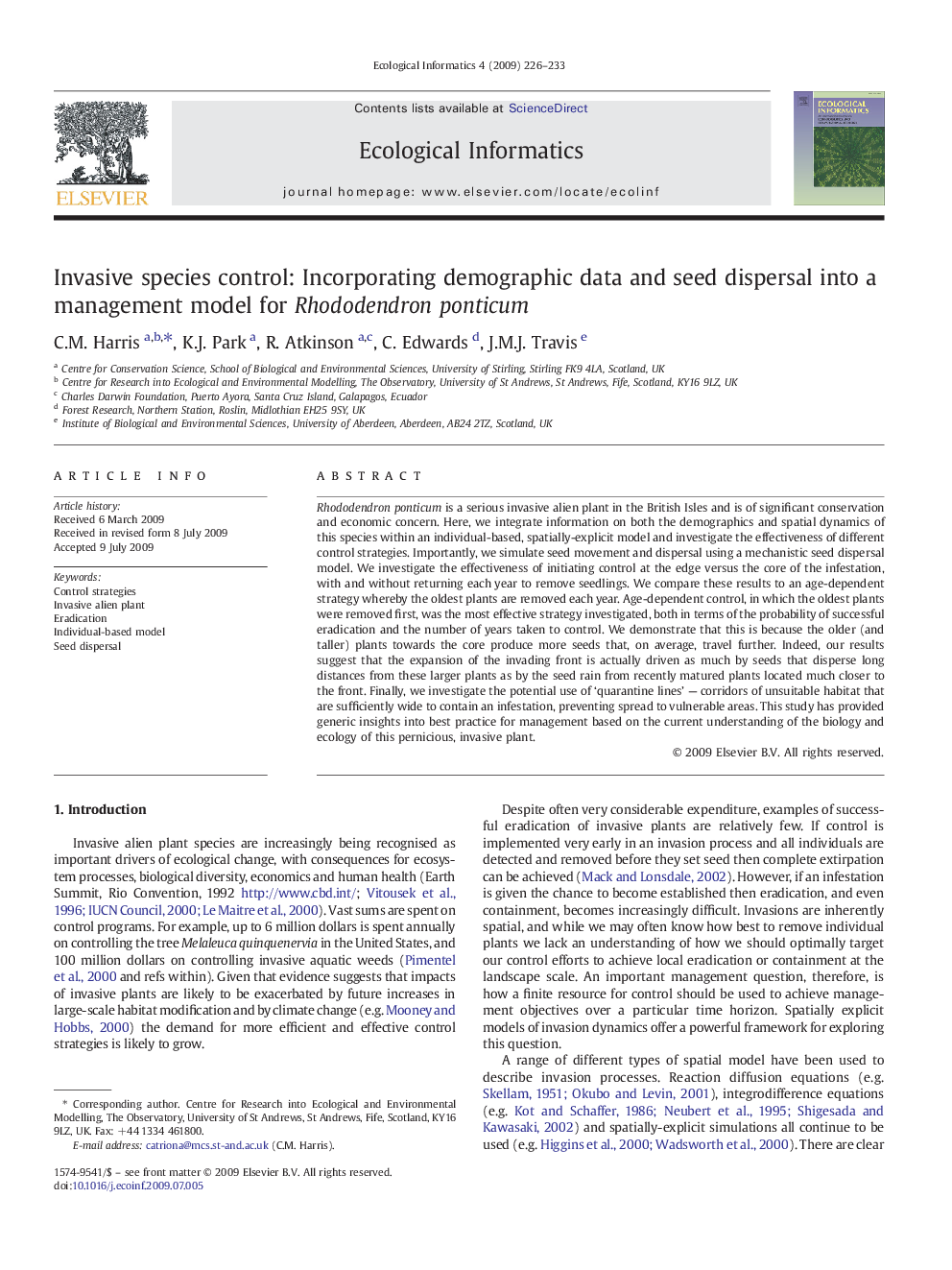| Article ID | Journal | Published Year | Pages | File Type |
|---|---|---|---|---|
| 4375229 | Ecological Informatics | 2009 | 8 Pages |
Rhododendron ponticum is a serious invasive alien plant in the British Isles and is of significant conservation and economic concern. Here, we integrate information on both the demographics and spatial dynamics of this species within an individual-based, spatially-explicit model and investigate the effectiveness of different control strategies. Importantly, we simulate seed movement and dispersal using a mechanistic seed dispersal model. We investigate the effectiveness of initiating control at the edge versus the core of the infestation, with and without returning each year to remove seedlings. We compare these results to an age-dependent strategy whereby the oldest plants are removed each year. Age-dependent control, in which the oldest plants were removed first, was the most effective strategy investigated, both in terms of the probability of successful eradication and the number of years taken to control. We demonstrate that this is because the older (and taller) plants towards the core produce more seeds that, on average, travel further. Indeed, our results suggest that the expansion of the invading front is actually driven as much by seeds that disperse long distances from these larger plants as by the seed rain from recently matured plants located much closer to the front. Finally, we investigate the potential use of ‘quarantine lines’ — corridors of unsuitable habitat that are sufficiently wide to contain an infestation, preventing spread to vulnerable areas. This study has provided generic insights into best practice for management based on the current understanding of the biology and ecology of this pernicious, invasive plant.
